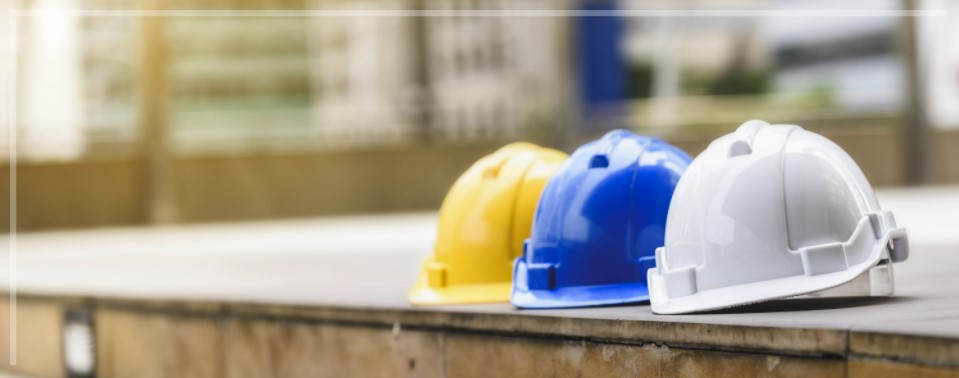Do Hard hats and Safety Helmets have an Expiry Date
Yes you are safe if your hard hat is flawless, but how can you ascertain that your hard hat is in good/safe condition? Does the hard hat/safety helmet have an expiry date? Do we need to replace hardhats after using them for a few months or years or do they last forever? In this article we are trying to find the answers to these questions.
What Do the Experts Say?
Section 3 of Australian Standard AS/NZ 1800:1998 Occupational Protective Helmets – Selection, care and use provides advice on the “Care and Maintenance of Occupational Protective Helmets”;
Clause 3.4 – Periodic inspection and maintenance, states:
“All components, shells, harnesses, headbands and accessories should be visually inspected at least weekly for signs of dents, cracks, penetration or other damage due to impact, rough treatment or unauthorized alterations which may reduce the degree of safety originally provided.
“Helmets showing damage or deterioration to the shell should be immediately withdrawn from service and discarded (completely destroyed). Helmets known to have been subject to significant impact should also be discarded, (completely destroyed) even where the damage incurred is not obvious.
“Helmets with sound shells but with damaged, excessively dirty, or defective harness components should be withdrawn from service and the complete harness and cradle replaced “
Occupational Safety and Health Branch Labour Department, Government of Hong Kong says,
“Service life of safety helmets is a function of several factors including materials used, quality control, usage conditions, care and maintenance. It is very difficult to accurately determine as helmets are used in various conditions, ranging from the very harsh to the very light.
Under normal services, most helmet shells can provide adequate protection for about 2 to 3 years. Plastic components of harnesses may deteriorate more rapidly in service and so harnesses should be replaced at intervals not longer than 2 years, unless otherwise specified by the manufacturer. It should be noted that signs of damage or deterioration might be observed in a much shorter service life. Should such be a case, the safety helmet should be immediately withdrawn from service and discarded.â€
How Can We Identify the Manufacturing and Expiry Date of Hard Hats?
Each helmet, when manufactured, has a year and month manufacture date stamped on the inside of the hardhat shell and some of them have a full date too.
[us_image image=”538″ size=”full” align=”center”]
[us_image image=”539″ size=”full” align=”center”]
So Are you Safe Now?
Check your hard hat/safety helmet for:
Date of manufacture
Being used for more than 2 years (Is it a new helmet, or borrowed from your friend or colleague? If yes, find out how many years they used the same helmet!!)
Any dents, cracks, penetration or other damage due to impact
The shell still being shiny or is it faded, chalky and/or have a brittle shell
Find out the answers and decide if it’s the time to replace your helmet or not. There are no specific rules or regulation stating the expiry date of hardhat or safety helmet, but in general it’s considered as 2 to 3 years from the date of manufacture provided you are doing periodical inspection and risk assessment on the hard hat.
Finally, Can You Put Stickers or Paint on Your Helmet?
[us_image image=”540″ size=”full” align=”center”]
Osha laws-regs/standard interpretations says that
OSHA’s general requirements for PPE are set forth in 29 CFR 1910.132. The specific requirements for head protection (protective helmets) are outlined in 29 CFR 1910.135, which incorporates by reference American National Standards Institute (ANSI) Z89.1-1986, Z89.1-1997, and Z89.1-2003. Both 29 CFR 1910.132 and 1910.135 do not contain provisions that explicitly prohibit painting or the placement of adhesive stickers on helmet shells. However, the employer’s ability to comply with the existing requirements of these standards may be adversely affected by the painting or placement of adhesive stickers on the helmet’s shell.
For instance, OSHA standard 29 CFR 1910.132(a) requires that PPE be “…maintained in a sanitary and reliable condition…” [Emphasis added.] To ensure a helmet is and remains in a “reliable” condition, the helmet must be inspected prior to use for signs of dents, cracks, penetration, and any damage due to impact, rough treatment, or wear that might reduce the degree of protection originally provided and used and maintained in accordance with the manufacturer’s instructions. Paints and stickers may eliminate electrical resistance and depending on the location and quantity conceal defects, cracks, penetration, and any damage that would be otherwise readily identifiable during the employee’s inspection to ensure reliability. Another concern is that paints, thinners, and solvents, as discussed in Appendix A of ANSI Z89.1-2003 and the appendices of the 1986 and 1997 versions, can also attack or damage the shell of a helmet and reduce protection.
For these reasons, painting or applying stickers must be performed in accordance with the manufacturer’s instructions, unless the employer can demonstrate that the altered protective helmet is equally as effective and protective as those meeting the requirements of Z89.1. Protective helmet manufacturers usually provide very specific instructions regarding paints, stickers, or decals that will not negatively affect the performance of a protective helmet.


